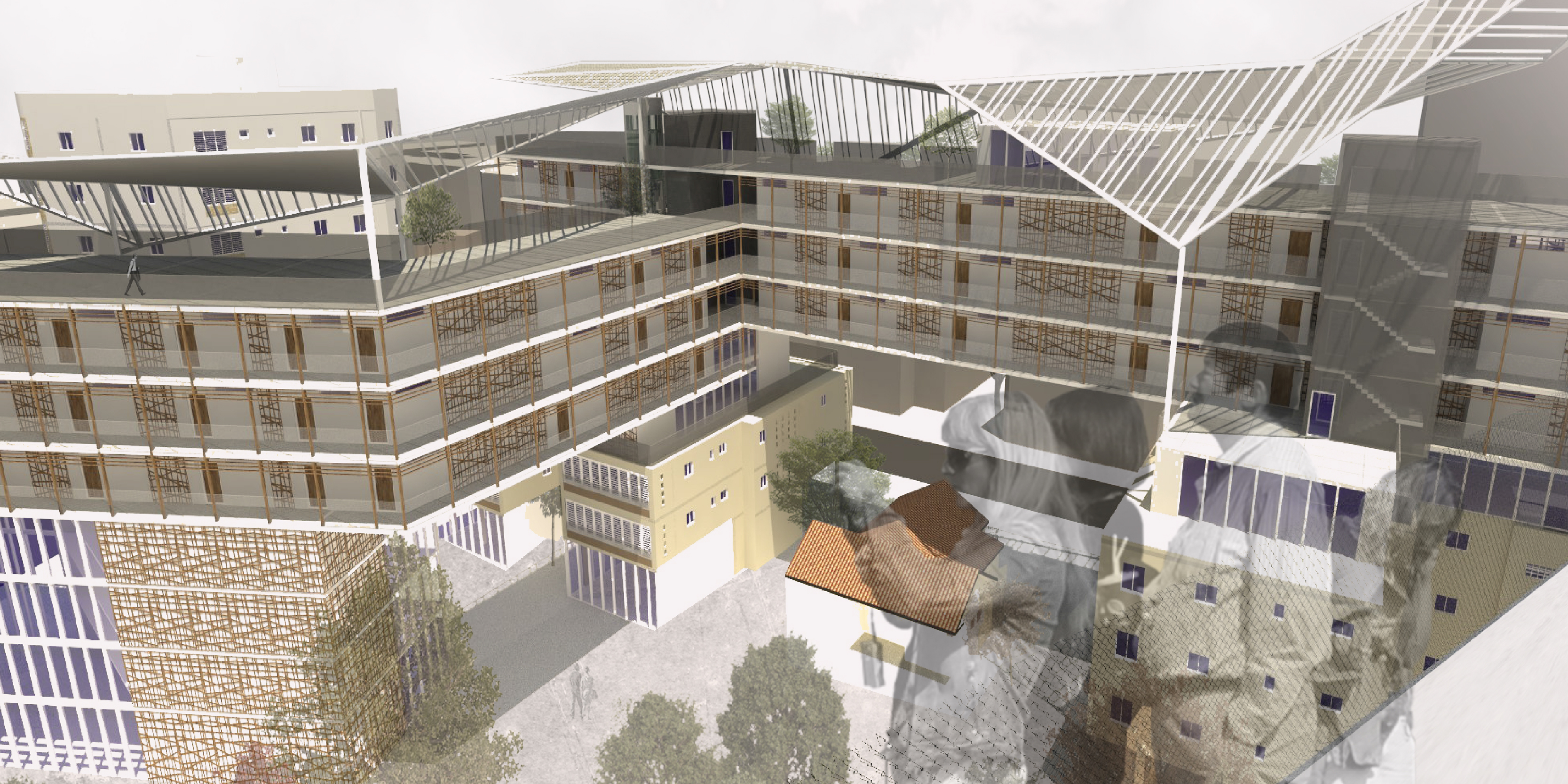
The project focuses on the city of Bat Yam. The coastal strip of the city is mostly an open space, except for the southern area that is intended for hotels. Bat Yam, like other coastal cities, sees in the coastal strip a tourist attraction, and therefore began to develop and plan four hotels.
The project envisions an alternative to today’s tourism and offers to enter the city, experience it, the people and the seashore as a whole. Sustainable urban tourism will enable the insertion of additional functions and programs into the city and renewal of the northwestern area, while preserving environmental and historical values.
Supporting sustainable urban tourism will encourage infrastructure improvement, accessibility, condensation, stop urban sprawling, encourage urban development and protect the coastal strip as a natural resource.
Tutors:
Architect Shmaya Serfaty
Architect Jonathan Natanian
TECHNION – Israeli Institute of Technology | 2017
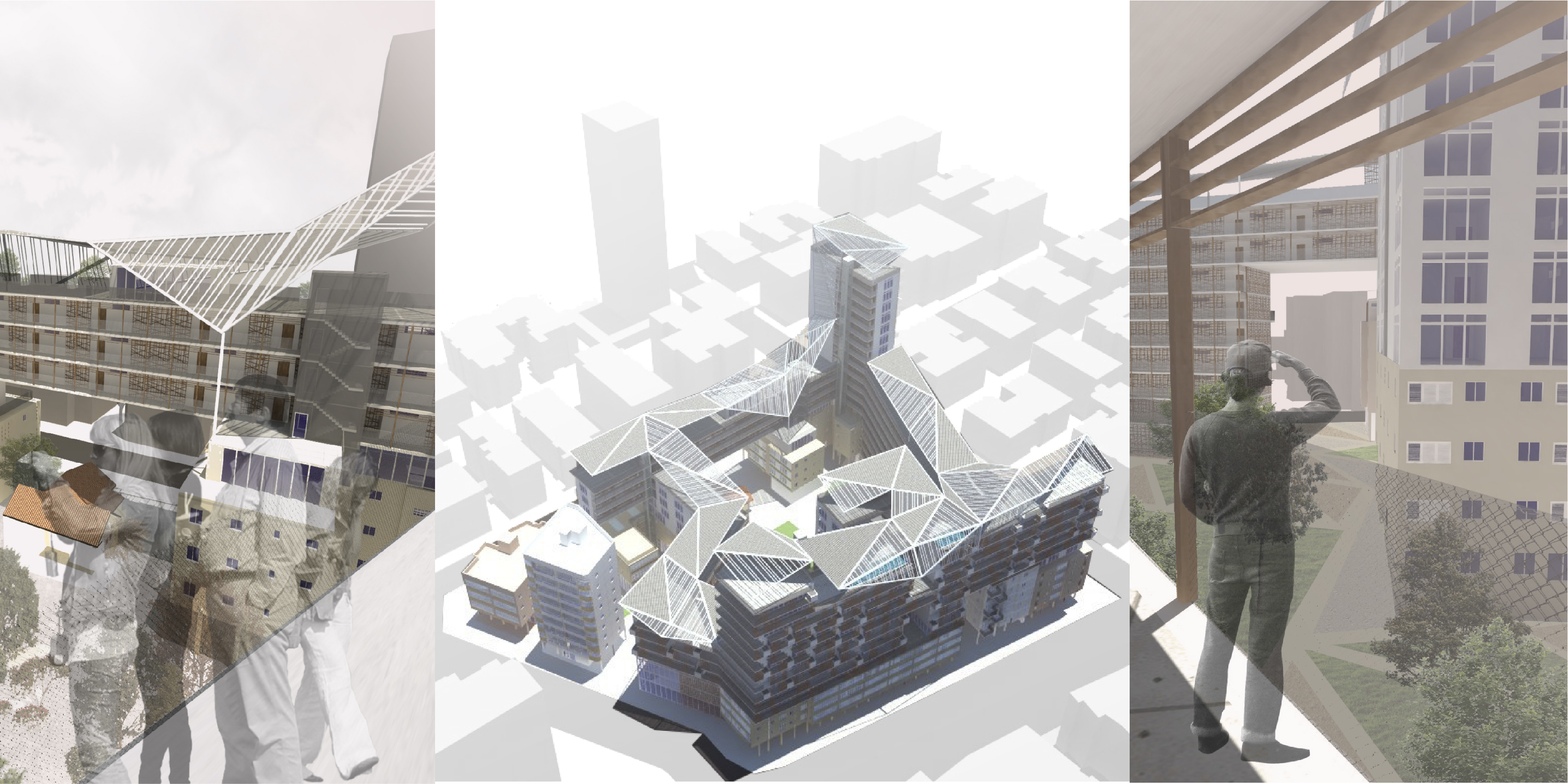
The Problem
In 2004, The Coastal Law was passed, which defined that new plans for the construction in the coastal environment (300 meters from the coastline) will be discussed by the Committee for the Protection of the Coastal Environment, furthermore construction plans could not be carried out within 100 meters of the water line.
Coastline environmental threats
Environmental awareness is growing, and it is already possible to see environmental movements strongly oppose to environmental threats. In Israel many opposers struggle against construction on this natural resource due to the awareness of its preservation as an open space for the future generations.
Leisure Tourism
The reasons for the visits of tourists are different, some of them linked to business but most of it is for personal leisure. Today there are varieties of tourism, historical, business and urban. Urban’s tourism main destination is the city, which provides all the services and infrastructure. In the diagram is a description of center coastline cities and the spread of the hotels, most of which support the leisure tourism and non- environmental coastline planning.

The city of Bat-Yam coastline
Among these coastal threats there is a major one in the city of Bat Yam. Hotel “Sun” on the coastline of the city was demolished in 2012, instead, 4 new skyscraper hotels are planned. That construction was approved before the new coastline protection law (which states that no buildings can be built 100 meter from the shoreline), hence the new hotels were approved to be built in a distance less than that.
The Compact City and The Urban Tourism
Urban sprawling is one of the challenges of the modern world. Dealing with this problem is possible with the promotion of Compact City scenario. Compact City means increasing the density and development to maximize uses, reduce travel distances, encourage use of public transportation, walk-ability and intensifying social interactions. There is a change in recent years in Israel regarding sustainable development of the cities which also entails a change in perception of tourism. Development of tourism depends on attractions and activities related to the natural environment, local history and culture, if some of these places are destroyed tourism can not exist anymore.
Urban tourism encourages the creation of a compact city.
In addition to the positive environmental aspects of urban tourism, it offers the visitor a wide range of experiences and activities, interaction with the residents that strengthen the social aspects, and strengthening of the local economy. In other words, it is a sustainable development of a balanced relationship between people, economy and environment.
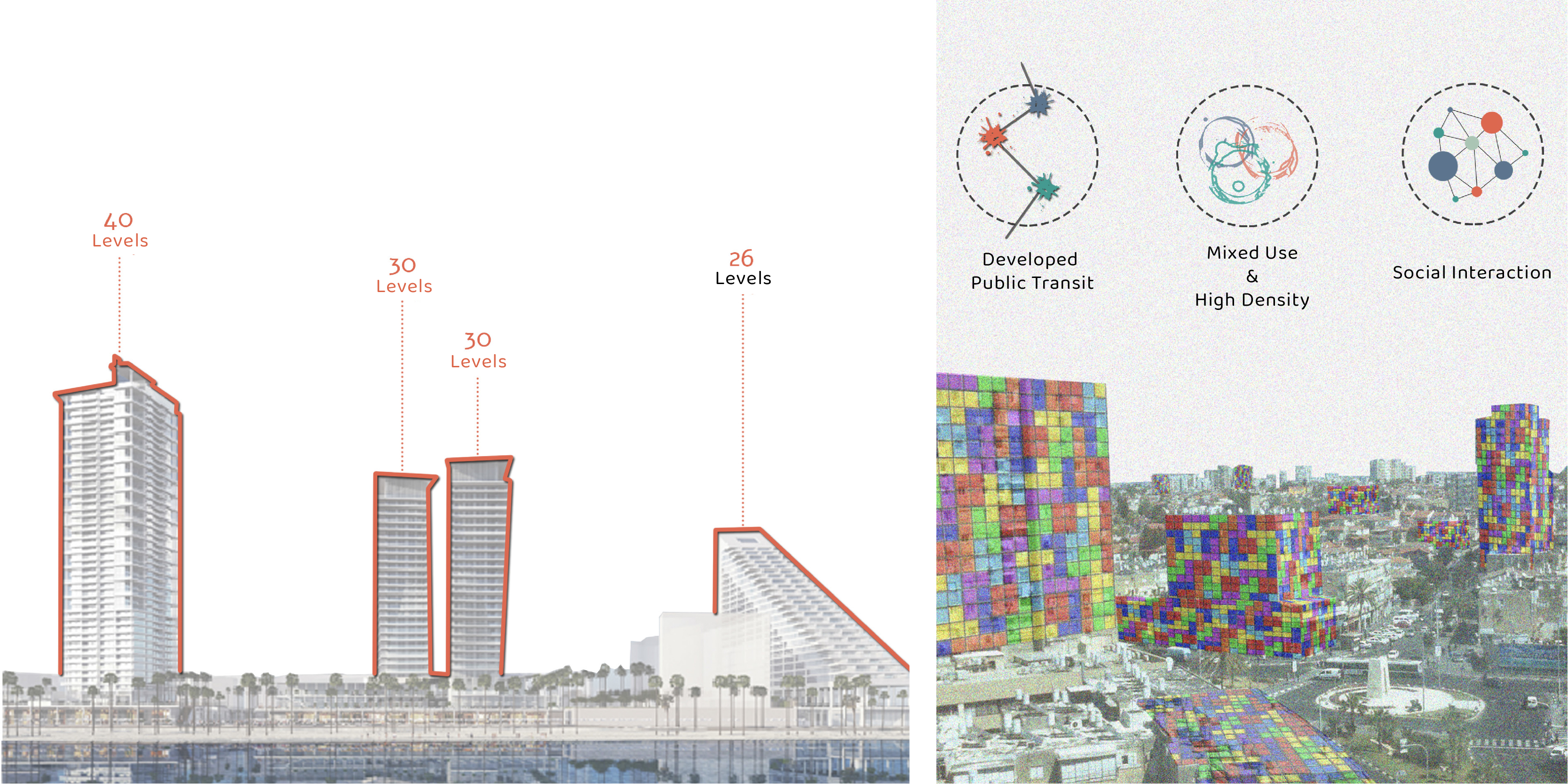
Urban Exploration
Urban exploration is a tool for understanding the physical space of the city.
- The urban structure:
Mapping the city’s main streets, cultural and commercial zones, open green spaces and points of interest. The mapping includes an existing state and plans for regeneration of specific areas. - The height of the area:
There is high built front facing the coastal strip, while the center is saturated with low rise buildings. The height creates a separation between the city and the sea.
City Centres
The conclusion of numerous mappings is that the city has three centres, the historical, cultural and occupational center.

Renewal Plans
The north-west section of the city is of a historic value. In a strategic plan for the renewal of the area, a historic urban route is offered, which passes through the urban fabric and adjacent buildings of historical and architectural value. Another route offered by the program is a landscape route that connects to the historical route. These routes have great urban potential. The project offers intervention at various scales in the urban route.

Urban Intervention
Choosing a route for the urban historical track and the appropriate landscape for urban renewal plans.
Local
Along the historic route, blocks of unique texture were chosen, which will function as hotels. Existing blocks will receive additional systems and programs. The block will function as one whole structure and not as a collection of structures.
Structural
The block promotes preservation of existing buildings, energy production and co-operative use.
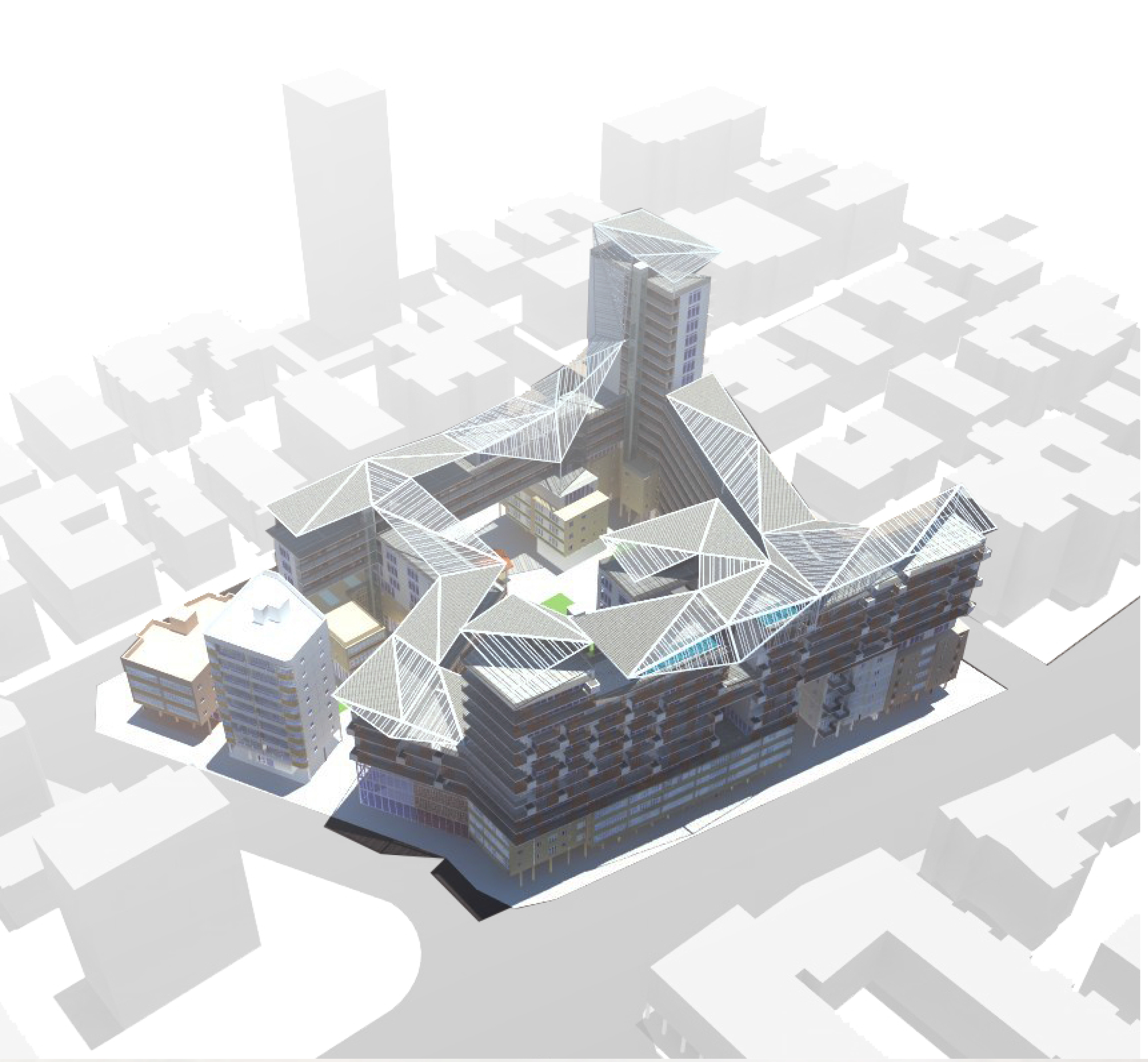
Infrastructure of The Block
- Connection: The existing block consists of scattered structures, the hotel structure added to the existing buildings unifies them physically and programmatically. The block is not composed of units but functions as one complete unit.
- Preservation: The goal is to add a new construction on the land in a minimal manner. That is in order to preserve the existing open space and make it accessible to the public.
- Movement: On the ground the space is open and people can walk through The Block. The new paths bring the urban historical route into the block. The structure of the new system is based on systems of existing buildings. The movement takes place in the inner ring of the block, circular and open. The open system enables a wide range of views.
- Functions: The ground floor of each building was separate and its main function was a warehouse or shops if the building was on the main street. The new plan uses all the ground floors and makes them suitable for public and commercial activity.
- Public floors: The new building has public floors, they have hotel support functions such as gym, spa, cafe, lounges and game rooms. The floors are open for use by visitors and residents in order to create interaction and add useful programs to the city.
- The roof floors: A large part of the new building’s roofs are public and provide a view of the sea through the city. On these floors there is a pool, spa and sport fields.
- The Roof: A block that functions as a whole unit has a decomposed roof that acts as an energy creator (using photo-voltaic cells) in certain places and as a shading element in others, depending on the sun’s angle from the south.
- Vegetation: There is a wide use of vegetation on the 5 (4 facades + a roof) facades of the structure. The trees on the ground floor and the roof are deciduous and allow sun penetration during the winter season. The trees on the facades and open spaces in the building allow shading from the sun, oxygen generation and reduction of air pollution.
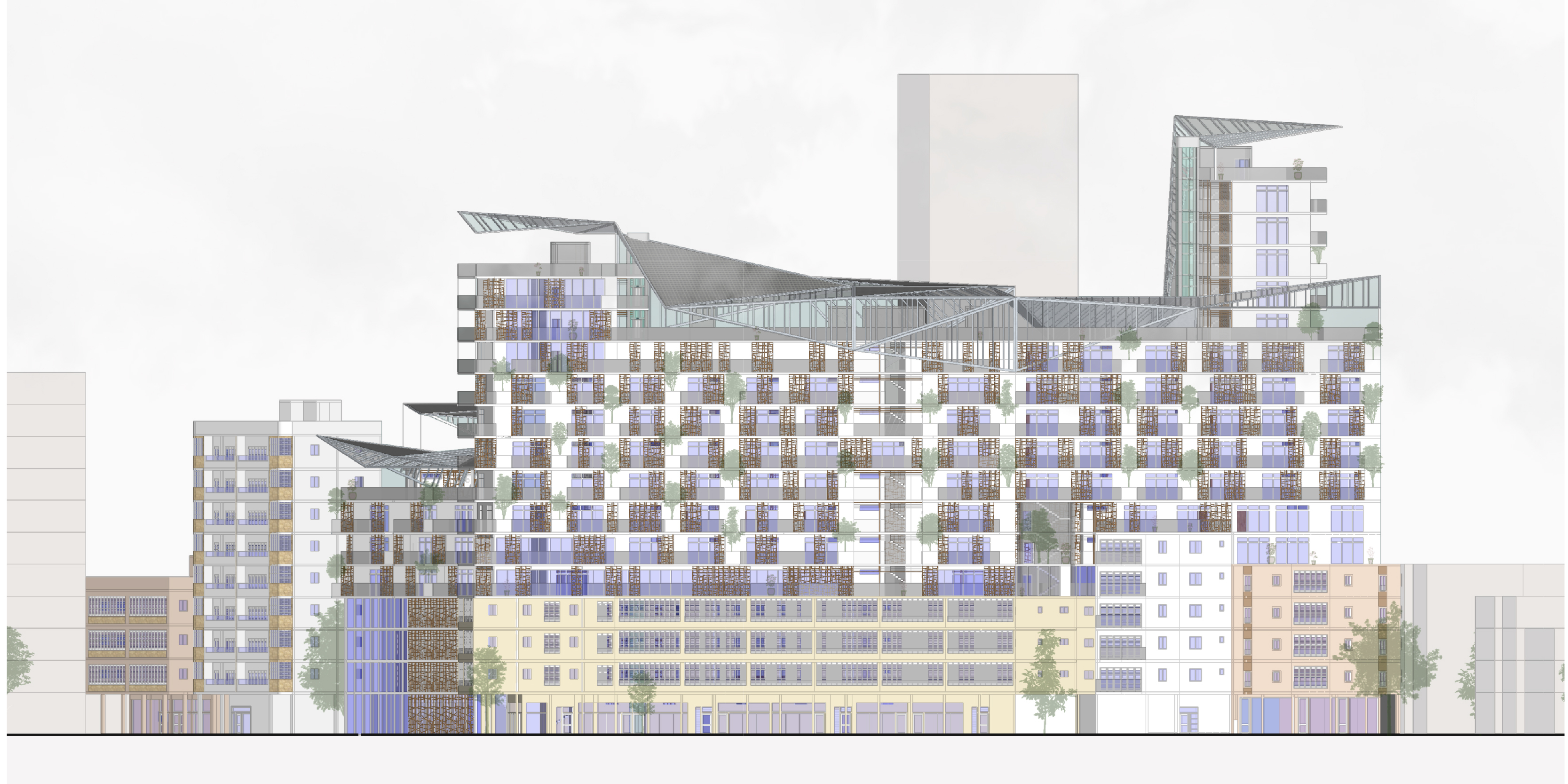
The addition of the hotel’s structure to existing buildings embodies many layers of sustainable planning. The combination of these planning principles create a wide range of uses that provide a different experience for the visitors and the residents.
